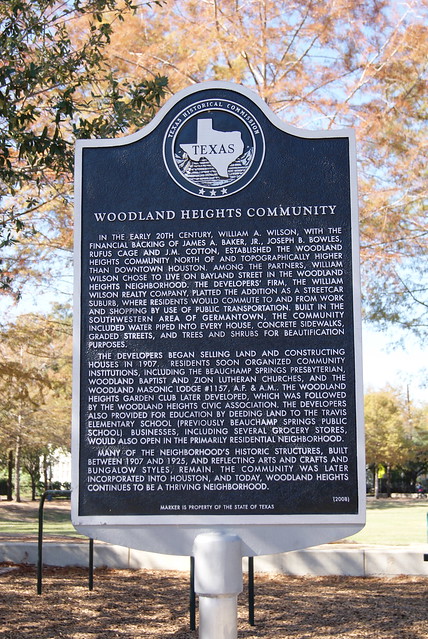
Marion & Steve on Flickr
All Rights Reserved
Woodland Heights Community In the early 20th century, William A. Wilson, with the financial backing of James A. Baker, Jr., Joseph B. Bowles, Rufus Cage and J.M. Cotton, established the Woodland Heights community north of and topographically higher than downtown Houston. Among the partners, William Wilson chose to live on Bayland Street in the Woodland Heights neighborhood. The developers' firm, the William Wilson Realty Company, platted the addition as a streetcar suburb, where residents would commute to and from work and shopping by use of public transportation. Built in the southwestern area of Germantown, the community included water piped into every house, concrete sidewalks, graded streets, and trees and shrubs for beautification purposes. The developers began selling land and constructing houses in 1907. Residents soon organized community institutions, including the Beauchamp Springs Presbyterian, Woodland Baptist and Zion Lutheran Churches, and the Woodland Masonic Lodge #1157, A.F. & A.M. The Woodland Heights Garden Club later developed, which was followed by the Woodland Heights Civic Association. The developers also provided for education by deeding land to the Travis Elementary School (previously Beauchamp Springs Public School). Businesses, including several grocery stores, would also open in the primarily residential neighborhood. Many of the neighborhood's historic structures, built between 1907 and 1925, and reflecting Arts and Crafts and Bungalow styles, remain. The community was later incorporated into Houston, and today, Woodland Heights continues to be a thriving neighborhood. (2008) #14729
by Texas Historical Commission Part of the Texas Historical Marker series
Colour: black
Wikimedia:
Flickr:
